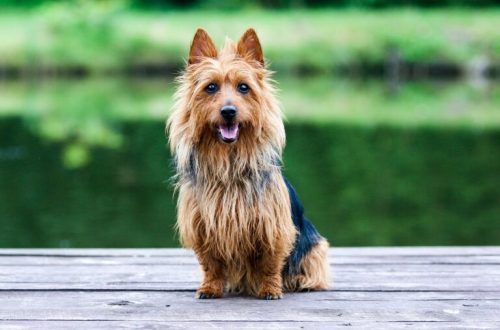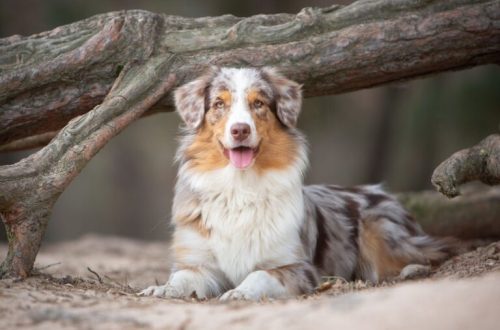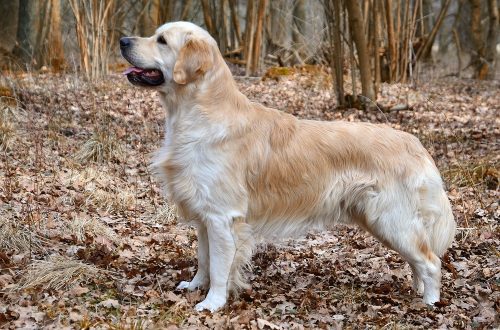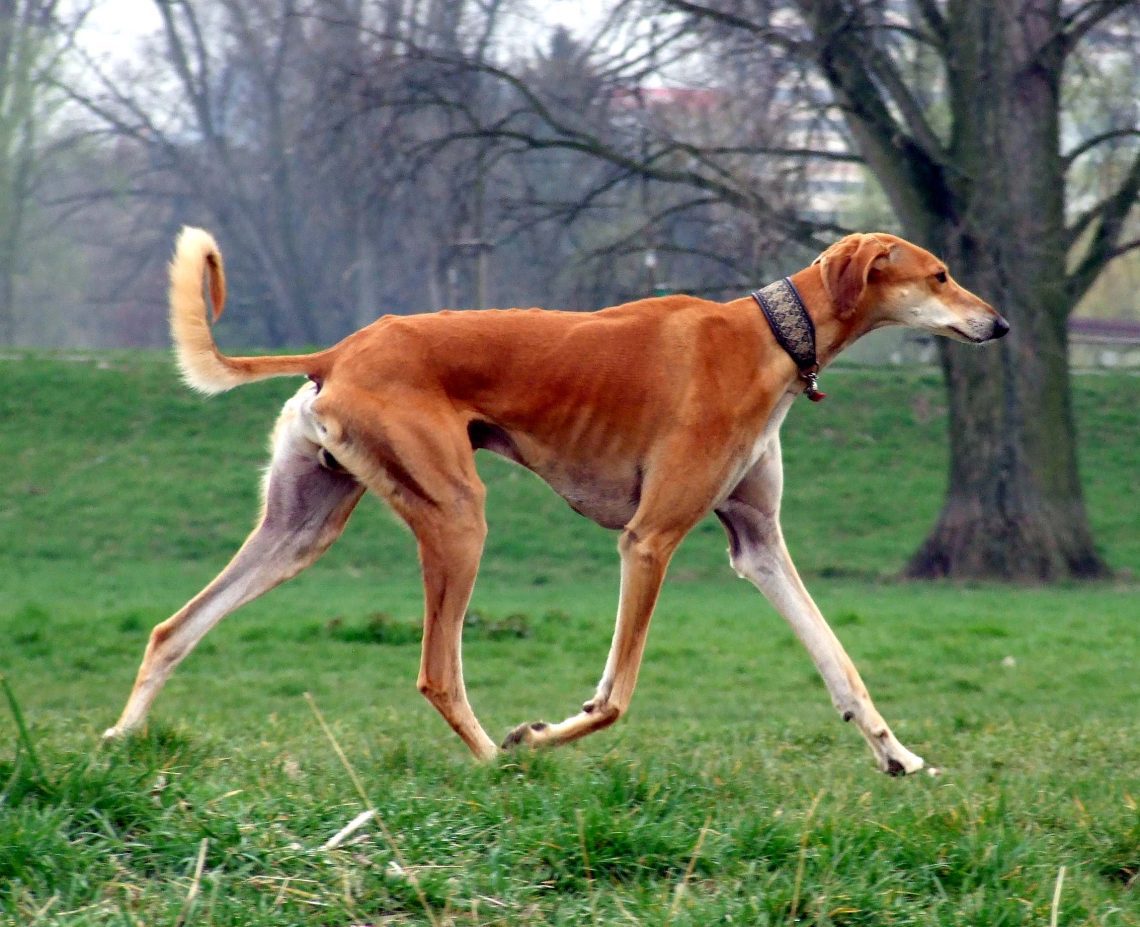
Saluki
Other names: Persian greyhound , gazelle dog
The Saluki is a tall, elegantly lean greyhound bred for unarmed hunting of small game and long distance dog racing.
Contents
Characteristics of Saluki
| Country of origin | Iran |
| The size | average |
| Growth | 56–71 cm |
| Weight | 20–30 kg |
| Age | up to 16 years |
| FCI breed group | greyhounds |
Basic moments
- The name of the breed presumably comes from the Arab city of Saluk. According to another version, “Saluki” became a derivative word from Seleucia, an ancient Syrian city on the Tigris River, located 25 km from modern Baghdad.
- Persian greyhounds are muscular dogs, with a minimum amount of body fat, hence the ineradicable passion of animals for soft ottomans and sofas.
- The Saluki is a classic greyhound. This means that walking a pet requires total surveillance, especially if small animals are walking nearby, which is the No. 1 goal for representatives of the breed.
- The Saluki is a quiet and independent breed, so if you’re looking for a tactful friend who won’t wake you up with barks and demands for petting every minute, the Persian Greyhound is the best option.
- Representatives of this family have a low level of aggression towards humans, although animals prefer to stay as distant as possible with strangers.
- The Saluki is one of the trending breeds in Islamic countries, especially in the UAE. In Russia, Persian greyhounds remain relatively rare pets.
- All representatives of this breed are distinguished by a fine mental organization, so they should be handled delicately.
- Salukis do not suffer from heat, but are very afraid of the cold. Typical Asians – nothing can be done.
- Persian greyhounds have an original paw shape that helps them to do “little iniquities”. For example, opening the refrigerator door and taking out forbidden delicacies or pulling off your blankets and pajamas.
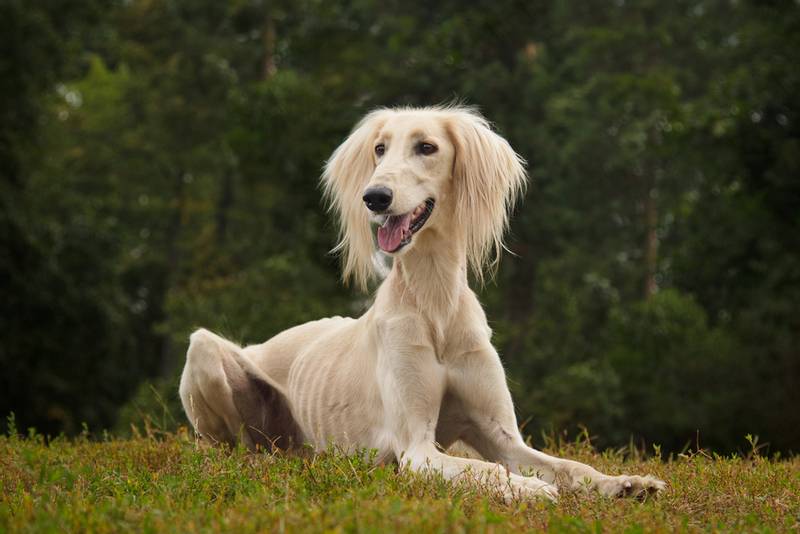
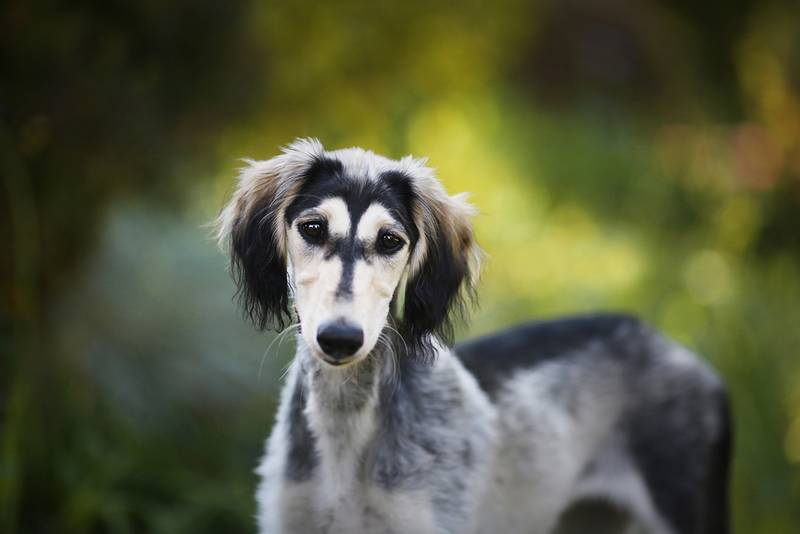
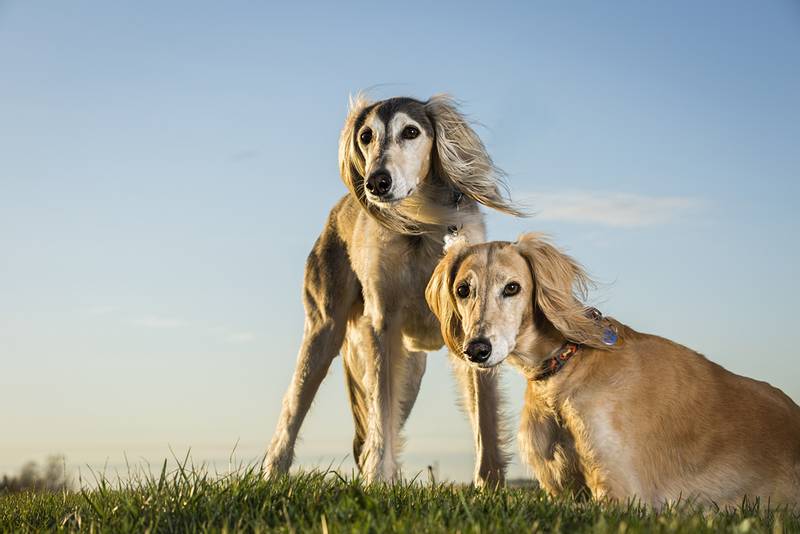
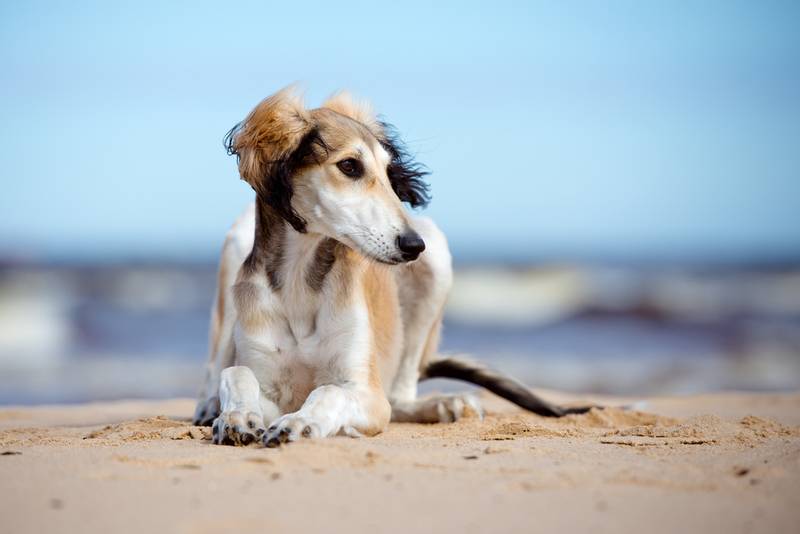
The Saluki is a living artifact; a dog that has survived the rise and fall of civilizations, but at the same time has not changed in any way either externally or in terms of working qualities. Balanced, delicate, sensitive, the Persian Greyhound is the type of pet that creates a special atmosphere in the house. Well, to be more precise, the Saluki is a kind of indicator of the level of comfort, painfully reacting to any negative. You will not see a Persian greyhound where there is a nervous atmosphere and constant noise. This breed prefers to indulge in silence and solitude, crawling out of its invisible “shell” only to chase a mechanical or live hare.
History of the Saluki
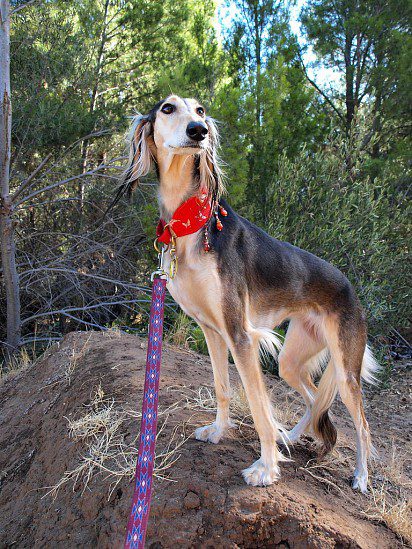
It is almost impossible to determine the exact age of the Saluki, therefore, in relation to this breed, experts prefer to get off with wordings like “one of the oldest types of greyhounds.” Nevertheless, images and remains found during excavations indicate that the Salukis were purposefully bred in Egypt and on the territory of Iran already 5000-6000 years ago.
Persian greyhounds owe their modern appearance to Arab nomadic tribes. The Bedouins, who since ancient times did not favor dogs and considered them to be devilish offspring, for some reason showed interest in the ancestors of the Saluki, declaring them sacred pets and taking an active part in their breeding. Pretty soon, the animals turned into real minions of fate. They were not driven out into the street, providing a cozy corner in the tent, pampered with delicacies and showered with caresses. What is there! The Saluki even had their own parade – a camel or a trotter that took them out hunting.
The golden age of the breed lasted long enough. The inhabitants of the desert considered the sale of their wards to be a mortal sin, therefore, only occasionally presented greyhounds to each other as a present. The Bedouin tribes rarely contacted, and centuries of isolation benefited the animals. The Saluki developed into strong, healthy hunters, masterfully chasing not only hares and foxes, but also the elusive gazelles.
Since the 7th century, the breed began to expand its habitat: along the Great Silk Road, the ancestors of the Persian greyhounds first came to China, and then with legions of crusaders to Europe. In particular, one of the earliest images of the breed can be seen in the painting by Lucas Cranach the Elder “Henry IV of Saxony” (approximately the end of the 15th – the beginning of the 16th century). However, medieval breeders did not manage to mass breed dogs due to the fact that the Arabs were in no hurry to part with their pets and stubbornly refused to sell them.
The official history of the breed in the West began only at the end of the 19th century, after several purebred Salukis were brought to England in 1895. The pioneer in this case was the daughter of one of the members of the British Parliament – Florence Amherst. It was the dogs from her kennel that were in high demand by the local elite.
In Russia, Persian greyhounds and their mestizos were noted even before the revolution, but we did not purposefully breed the breed. As for the registered individuals, they began to appear in the Russian Federation after 1999, when they managed to get offspring from the imported male Karavan Kaniis ibn Jiruvan and the female Bet Haram Sarlet.
Video: Saluki
Saluki breed standard
The existence of intra-breed types of Arabian greyhounds is welcomed by breeding commissions, which is considered a rare, if not exclusive, privilege. So the Saluki is literally a many-sided dog.
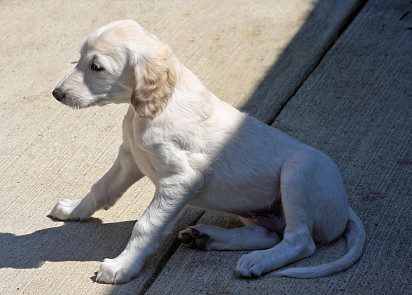
At the first meeting, representatives of this breed give the impression of being graceful, but very undernourished creatures. However, external asceticism is a unique exterior feature, enshrined in the standard. The ideal Persian greyhound should weigh 17-30 kg, and this is with a height of 58 to 71 cm. Individuals that have overcome the established weight bar look more prosperous, but they are invariably rejected at exhibitions.
According to the type of coat, the Saluki is divided into a traditional pedigree branch and a short-haired (smooth) branch. In terms of physique, representatives of the second variety practically do not differ from their relatives, however, they no longer have glamorous fringes on their ears and paws. By the way, this type is much less common, remaining a living exclusive, designed for a rare connoisseur.
Head
The representatives of the breed have a flat, elegantly elongated head, narrowed along the entire length, but moderately wide between the ears. The bridge of the nose (stop) is poorly marked.
Jaws and teeth
The Saluki has strong, strong teeth and very massive jaws that meet in a perfect scissor bite.
Nose
The standard saluki earlobes are black and flesh brown.
Eyes
The eyes of the Persian greyhound have the correct oval shape, but do not differ in bulge. The preferred colors of the iris are the whole palette from dark brown to hazel. The look of the dog is emphatically noble, attentively peering.
Ears
The large, downward-hanging ears of the Saluki are characterized by impressive length, a relatively high set, and a snug fit to the head. The upper part of the ear cloth should be covered with thin long strands of wool.
Neck
The Persian Greyhound has a long, flexible neck with well-developed muscles and a spectacular curve.
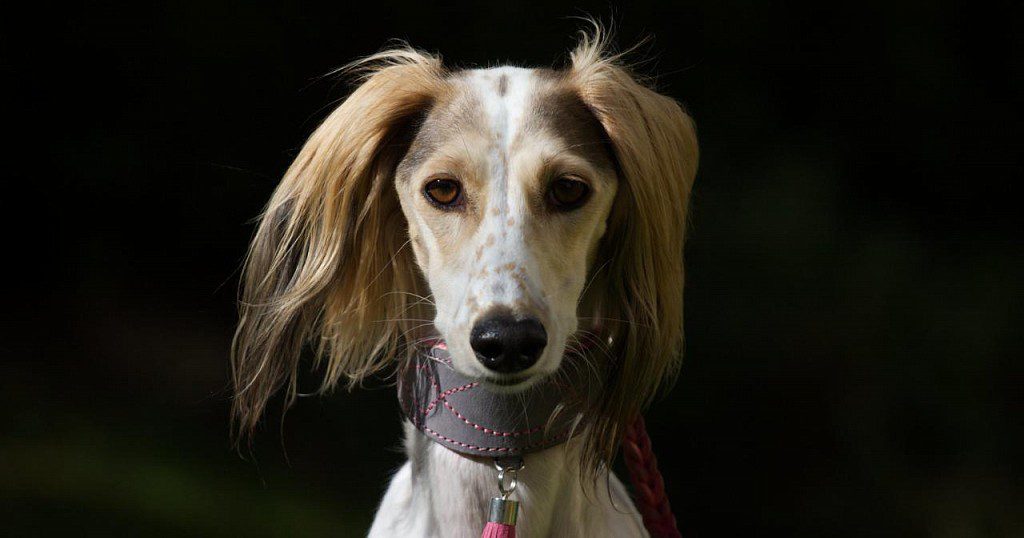
Frame
The physique of the representatives of this breed is elegant, but without a clear bias towards fragility. The strong, solid back of the dog is complemented by a slightly arched loin, a muscular croup and a moderately deep chest. The belly of the Saluki is well tucked up.
limbs
The front legs of the animal are long, perfectly straight. The shoulders are strongly “tight” back and well muscled. The forearms are the same length as the shoulder blades, the pasterns are slightly inclined, flexible. The rear part of the dog’s body, including the legs, is more developed, since its task is to provide springy jumps and a galloping run. The thighs and lower legs of the Saluki are rather large, the metatarsus is short, the angles of the articulations of the hocks are moderate.
Representatives of this breed have original paws. Massive, but flexible and elegant, they end in long fingers, of which the two middle ones are noticeably longer than the others. At the same time, neither the splayed (loose) nor the cat-shaped paws are characteristic of the Saluki. The dog moves softly and easily with good but smooth reach and intense drive.
Tail
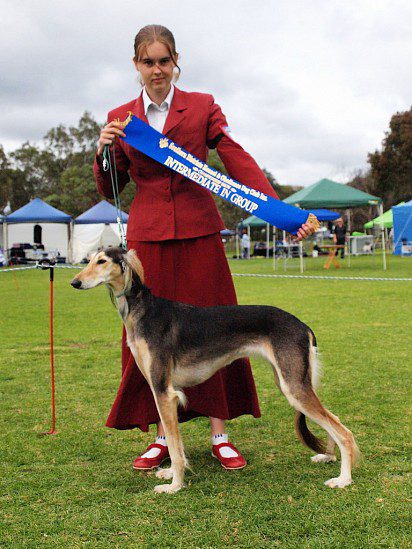
In a correct Saluki, the tail is set very low and is kept at the level of the back, or even lower. Usually the tail has a refined curve, and its back is covered with a silky fur, which forms a not too abundant dewlap.
Wool
The body of the Persian Greyhound is covered with a short silky dog, turning into glamorous feathering on the back of the thighs and legs. In puppies, increased fluffiness can also be observed on the shoulders and thighs. As for smooth-haired smooths, their type of coat is the same as that of the classic Saluki, but without feathering.
Color
The most common types of colors: reddish, cream, white, golden-red, tricolor (black and red-brown-white), grizzly, silver grizzly, black with reddish-brown. In addition, combinations of the listed colors are possible, for example, reddish / red with black tan. Brindle type of color is undesirable.
Disqualifying vices
The Saluki does not have specific exterior defects that can prevent the animal from participating in exhibition events, therefore, if gazelle dogs are disqualified, it is solely for the vices inherent in the entire greyhound clan. As an example: bite anomalies, blurred breed, deviant behavior and other shortcomings common to the greyhound group can block the path to the championship for a pet.
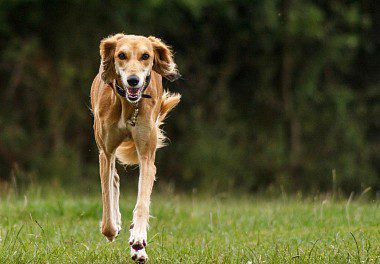
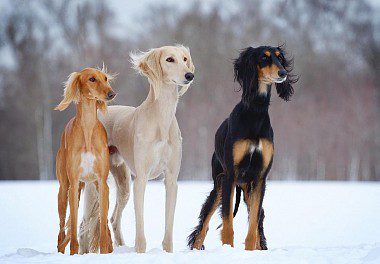
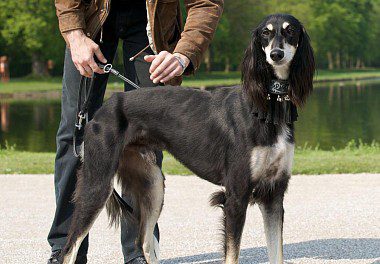
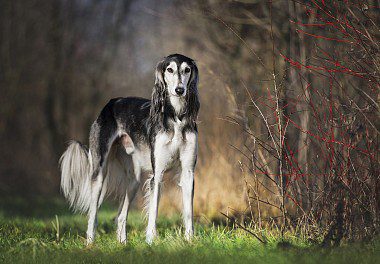
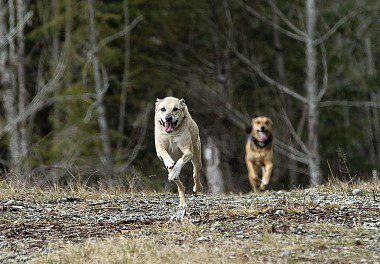
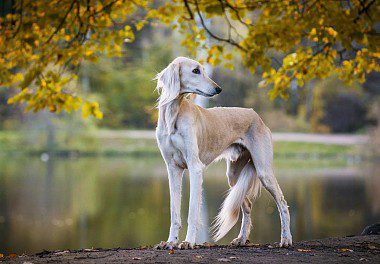
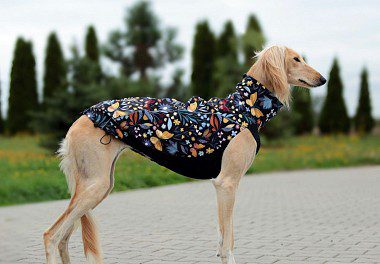
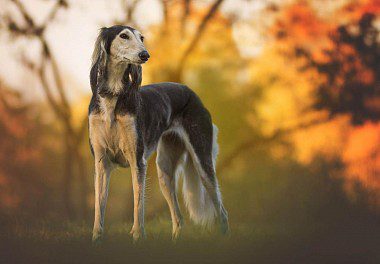
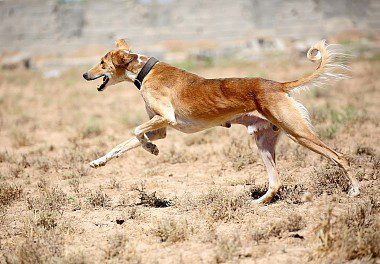
Saluki character
Salukis are intellectuals to the marrow of their bones: balanced, delicate, but terribly proud. In particular, they are reluctant to communicate with children and are not at all inclined to let them offended pranks, so if the heirs have made it a rule to bully the animal, do not expect it to endure. It is important to understand that the pet’s nervous system is extremely sensitive. For example, Salukis cannot stand raised tones, and it doesn’t matter to the dog whether the owner scolds her or just sorts things out with someone she knows. As soon as the greyhound hears that the conversation begins to turn into a scream, she will try to leave. It’s good if the animal has somewhere to hide from the brain-boring noise. If not, the Saluki quickly degenerates into a twitchy nervous creature with whom it is impossible to agree on anything.
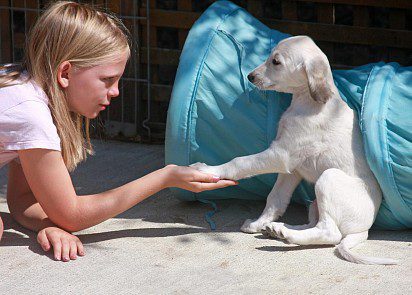
The Persian greyhound belongs to those dogs that obey one owner, therefore it is completely pointless to demand that the pet fulfill the requirements of all family members with the same zeal. However, you should not be afraid that the Saluki will openly hate the household either. Congenital aristocratic qualities will not allow the animal to walk with a gloomy look, suspecting everyone and everything of a world conspiracy. Representatives of this breed are restrained, affectionate and kind to any familiar person. Friendliness does not extend only to faces that the dog sees for the first time.
The Saluki will never annoy the owner with their own pretensions. Walking behind a man’s tail, sudden attacks and the demand for hugs – such actions for these “eastern nobles” are beyond comprehension. At the same time, the animal can sincerely suffer from loneliness, reassuring itself in the absence of the owner with not the most innocent pranks. Sometimes one gets the impression that a Persian Greyhound is needed exclusively “for the background”, and also to bring food and sometimes scratch behind the ear. In fact, a Saluki may love you with all his heart, but he saves emotions for the most important thing in his life – hunting and running.
Persian greyhounds are accommodating creatures, easily fitting into dog groups, while they do not suffer at all from the inability to communicate with fellow tribesmen. Nearby drew a company of four-legged friends of man? The Saluki will happily spend time in their company. Do you keep only one dog, which you try to walk away from dog areas? Wise “Persians” and this alignment will suit. As for cats and other pets, it is very difficult for greyhounds to find an approach to them. Not the last role here is played by individual characteristics of character. So, for example, with timely and systematic training, individual individuals cease to see prey in cats. Others do not compromise their own principles under any circumstances and chase purrs throughout their lives and despite the formidable shouts of the owner.
Education and training
Salukis have been perfected for thousands of years in only one type of activity – hunting, so you can not expect diligence from them in training. This does not mean that the breed is not trainable in principle. With due patience, it is not difficult to achieve something from the Persian greyhounds. Nevertheless, it is better not to inflate yourself with inflated expectations: the Saluki will not become a champion in obedience, no matter how hard you try. The breed does not respect jumping either, so it is difficult for the animal to work with the Frisbee disc.
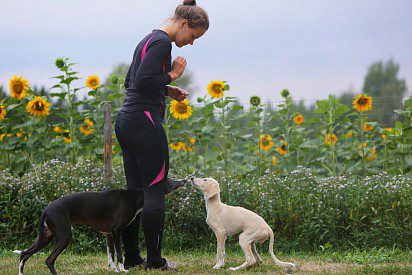
Persian greyhounds are classic track and field athletes, so choose for them sports that involve increased physical activity, that is, agility, hunting and coursing. By the way, in the latter, the breed can beat Greyhounds, which, although they develop phenomenal speed, do not differ in special endurance. As for working out commands, the sooner you start it, the better. The Saluki is a breed that needs early socialization and training. True, you will have to take into account that in puppyhood, dogs also have donkey stubbornness. According to cynologists, this is how the baby tests the owner for endurance. Having matured – which usually happens by the age of two – the Saluki ceases to measure authority with the owner and turns into an affectionate, attentive pet.
The main difficulty in training and educating Persian Greyhounds is that you will have to work with the breed using the method of positive reinforcement. Punishments and harsh saluki shouts are frightening and offending, so carry a couple of delicacies in your pockets to appease your proud Bedouin pet. Taking your four-legged friend for a walk without a supply of treats is not worth it. Persian greyhounds are addicted natures and react to calls when they themselves want it. As a result, food remains the only way to influence the young individual.
Salukis love to be talked to and explained the meaning of things and phenomena, so if you want to develop a habit in an animal for certain procedures like washing or combing, try to voice each action. Clickers help to focus and redirect the attention of the dog, although here it all depends on the individual and the situation. Infatuated with the pursuit of a stray cat, the Saluki is unlikely to listen to the clicks of the device.
Dog racing and saluki hunting
Often breeders are afraid to drive Salukis to movie theaters. Allegedly, having tasted coursing, the dog will become uncontrollable in everyday life. In fact, everything is exactly the opposite: Persian greyhounds are smart enough to distinguish between sport and real life, therefore, having come off on the track, they behave with restraint and prudentness on walks. The only thing is, before you start honing your speed and maneuverability, learn the “Stop!” command with your ward. As for the preparation for coursing, everything is standard here: take the Saluki to training races, fasten it to the bike (you can buy a special tow bar) and cut circles through the fields and unpaved country roads.
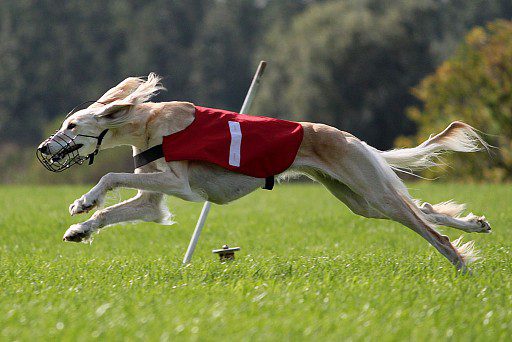
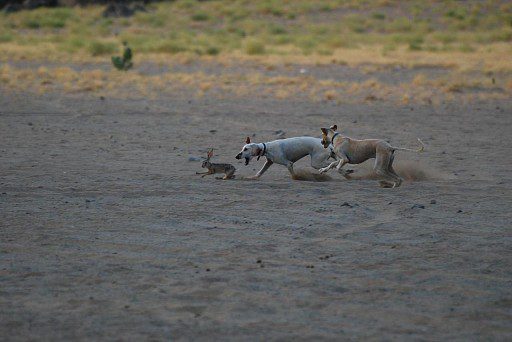
An excellent alternative to coursing in the countryside is gunless hunting. For example, in the UAE, the breed is mainly used to catch gazelles. This process is carried out with great fanfare, growing to the level of an elite sports show. In Russian realities, the hare remains the best target for the Saluki. Here it is worth making a clarification: the Persian Greyhound is not such a fanatical sprinter as the Greyhound, and is capable of chasing game for a long time. Moreover, sometimes the Salukis deliberately chase the animal for longer, inflaming the excitement in themselves, although if desired, they would easily catch the victim in a couple of minutes. Of the hunting advantages, it is worth noting the good work of the breed in rough terrain, as well as its ability to see obstacles while running and skillfully maneuver between them, which not every greyhound can do. Well, the main thing: Salukis do not need to be baited. Yes, a pet can be slightly trained in hunting skills, but an innate reflex should work in a dog to pursue prey.
Maintenance and care
Having adapted to the arid desert climate for thousands of years, Salukis are sensitive to Russian frosts and autumn dankness, therefore in our country it is customary to keep dogs in houses, resettling them in an aviary only for the summer. But the apartment content of the breed is not suitable. Persian greyhounds are quite large and very frisky creatures, in conditions of limited space they feel constrained. The optimal housing for a dog is a country cottage with a decent fenced area and a spacious yard. By the way, despite the high level of activity, the animals in the house behave well-mannered and calm. A well-exercised Saluki loves to lie on something soft, so your sofas and chairs will often be occupied by the butt of the pet.
Hygiene
It makes no sense for the owner of the Saluki to buy a bunch of grooming accessories: the breed sheds sparingly and seasonally, and its coat does not exude an unpleasant odor, even when it gets very wet. However, chasing across lawns and forests, Persian greyhounds are overgrown with kilograms of burdocks, which are not the most pleasant thing to remove. If the pet is in the habit of carrying spiky “bombs” on the feathers, stock up on baby talc or conditioner for combing. Sprinkle the burdocks liberally with powder or spray with a spray and walk through the strands with a rare comb. Some breeders recommend bandaging the animal’s legs while walking, protecting the tail with a fabric cover attached to the lower back, and winding the curls on the ears onto hairpins. However, the method is not always effective, because while running, the Saluki rips off any clothes. Accordingly, if the prospect of burdocks is very scary,
Frequent bathing Persian greyhounds are contraindicated. With such a deficiency of body fat, traditional dog cosmetics will do more harm than good. In addition, Salukis are naturally clean creatures and are unlikely to sin with “spa treatments” in ditches and “aromatization” of wool with carrion. It is recommended to wash the dog every 2-3 months with gentle shampoos, followed by drying with a hairdryer or a towel. Particular attention is paid to the hygiene of the ears and claws. The former must be cleaned weekly of excess sulfur and manually ventilated. The second is to systematically cut and grind if the plate does not have time to grind off while running.
walks
On the one hand, Salukis are very lively, and without daily exercise they have a hard time. On the other hand, these “Asians”, like all greyhounds, do not like to prolong the pleasure, preferring to discharge the internal battery immediately and to zero. It follows from this that walks with the dog should take place at a dynamic pace (or better, run), but there is no need to artificially increase their duration. Moreover, in 40 minutes, the average Saluki runs to the point of exhaustion and drags the owner home himself.
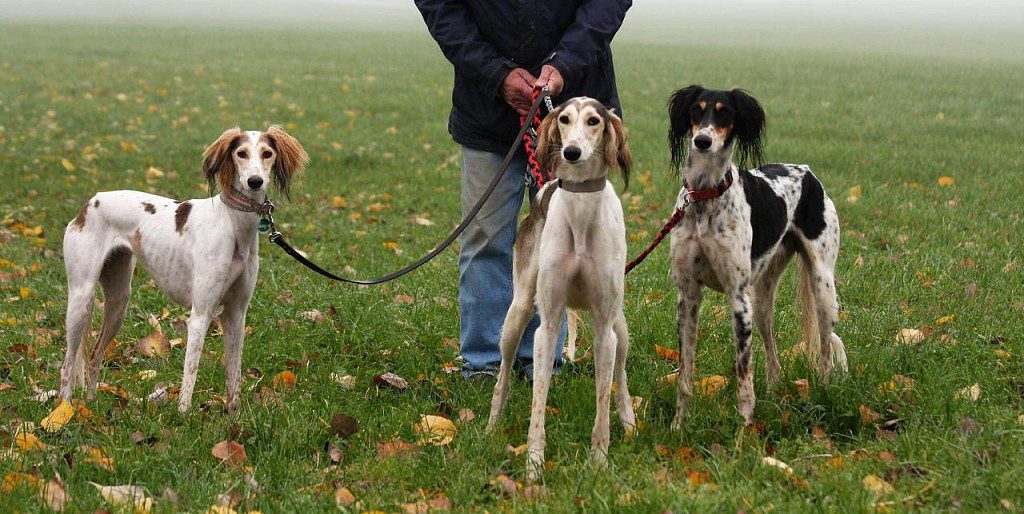
Since the breed is distinguished by a developed hunting instinct, it is vital to correct the behavior of its representatives on walking. Every running creature, be it a stray cat or a roller-skating teenager, awakens in the Persian greyhounds a competitive spirit, expressed in the pursuit of a moving object. For a homeless purr, such races usually end in death, and for the owner, conflicts with others. Remember, not all passers-by are delighted that a huge something with a fanatical gleam in their eyes is chasing them.
It is better to let the Salukis off the leash where there are fewer people and animals, and even then you should not relax too much, as the dog manages to disappear from view in a matter of seconds. And a little about winter walks: Persian greyhounds are scared by the cold, but sacrificing daily runs and training because of this is stupid. Buy an insulated jumpsuit and a hat for your pet and boldly go in search of adventure!
Feeding
Portion sizes and nutritional value depend on what the dog is doing. For example, the diet of pets in terms of calories should be inferior to the lunch of a running or hunting Saluki. However, even representatives of sports lines need unloading periods, so when the running or hunting season ends, the portion is cut by a third so that the animal does not stretch the stomach with large amounts of food and does not get used to filling up in reserve. In this case, you should not be afraid that the pet will remain hungry: Salukis “keep their figure” from birth and hereditary gluttons among this family are very rare. As for the menu options, everything is standard here: natural food (a standard greyhound diet will do) or industrial food of at least super-premium class.
Saluki health and disease

Thousands of years of geographical isolation have benefited the Salukis. Of course, the breed did not completely get rid of the genetic predisposition to ailments, but at least reduced the list of ailments to the minimum. As a result: out of a dozen diseases common to the greyhound group, Salukis suffer from only two – cardiomyopathy and hypothyroidism. However, this is in theory. In practice, the likelihood that an animal will inherit any of the ailments is only 5%.
The breed has another interesting feature: Salukis do not tolerate anesthesia well, as, in principle, any anesthesia. As a result, a slightly overdose of the drug, to which the body of any other dog would not have reacted, for Persian greyhounds ends in death. There are only two ways out of this situation: a decrease in the standard dose of anesthetic and prolonged infusion therapy (droppers).
How to choose a puppy
When looking for a suitable Saluki puppy, you will have to follow the same principles as when choosing any other dog. In particular, communicate more with breeders by visiting kennels to assess the conditions in which greyhounds are kept. If before the deal the seller hints that if you are dissatisfied with the puppy, the animal will not be accepted back, this means that the person makes money on dogs and it does not matter to him what fate awaits his wards.
Be sure to meet the parents of the kids. Do not limit yourself to reading pedigrees and evaluating temperament features, but specify the age of the litter dam. If the bitch is less than 2 or more than 9 years old, it is pointless to count on healthy and promising offspring. You should not buy puppies in multidisciplinary kennels, the owners of which simultaneously breed two or more breeds. If a breeder breeds and puts up for sale representatives of various breed groups, this characterizes him as an incompetent “breeder” engaged in the sale of low-quality “goods”.
Photo of Saluki puppies
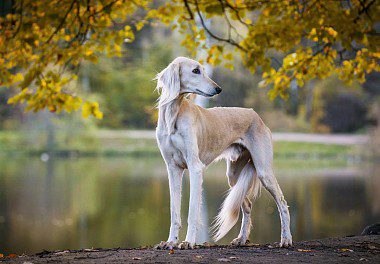
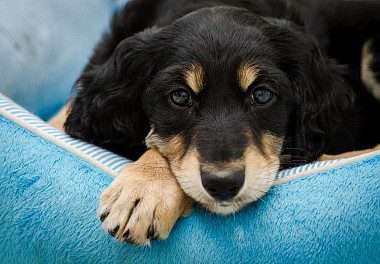
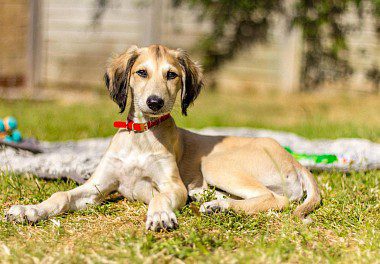
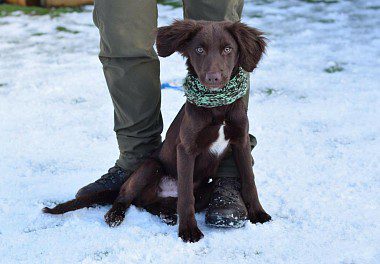
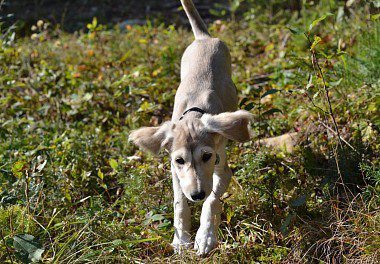
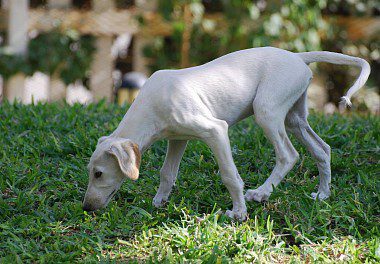
Saluki price
Even according to the most conservative estimates, a Saluki puppy will cost 400 – 500$, and it will not be a representative of running lines, but a classic pet with an RKF metric and an average appearance. For more ambitious owners, it is better to go to elite kennels like Shavati, where the average price tag for a promising puppy will be 1000 – 1500$ rubles.



